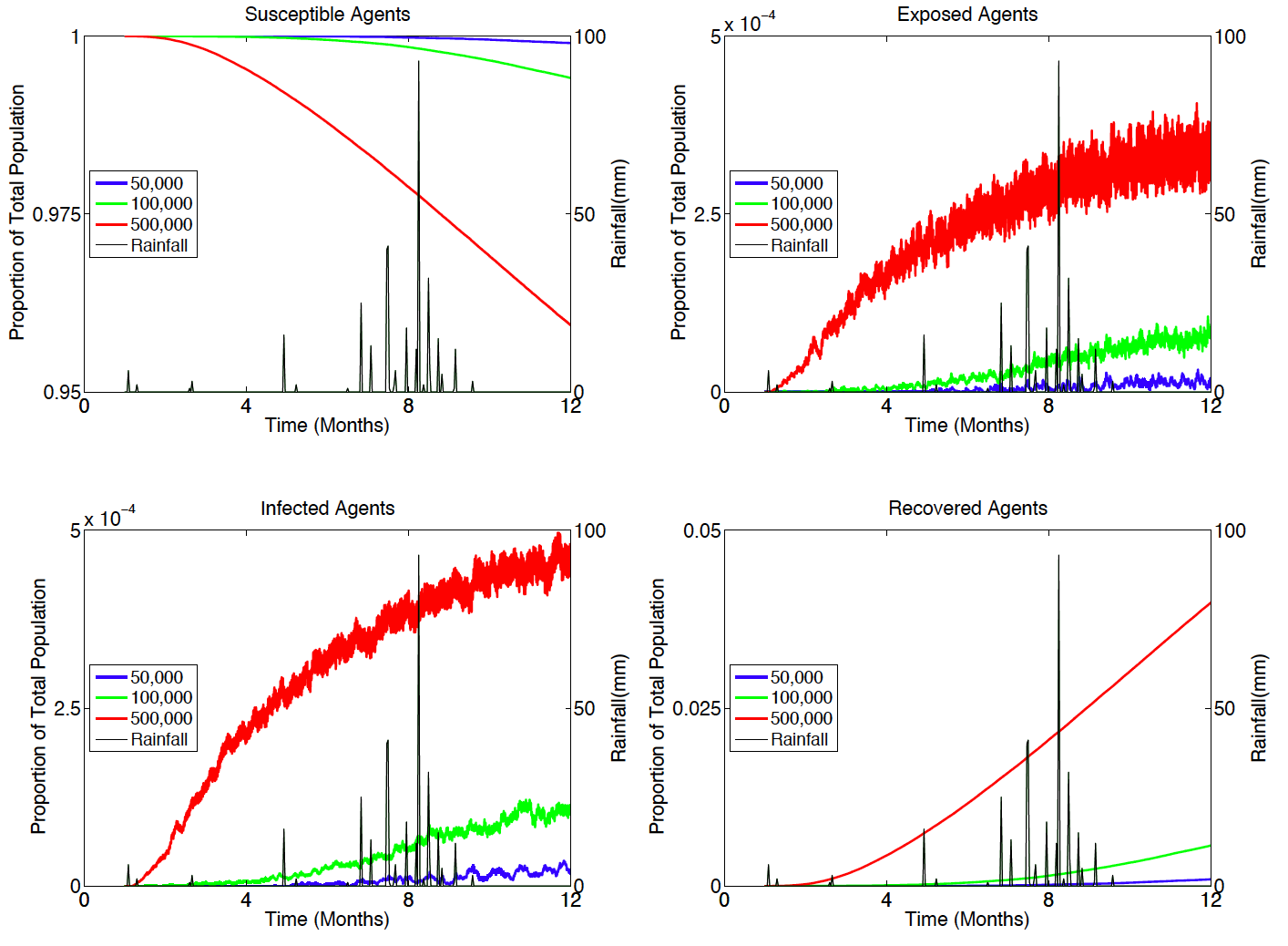 |
| Cholera transmission through the interaction of host and the environment |
We are pleased to announce we have just had a paper published in Environmental Modelling and Software entitled "An Agent-based Modeling Approach Applied to the Spread of Cholera"
Research highlights include:
- An agent-based model was developed to explore the spread of cholera.
- The progress of cholera transmission is represented through a Susceptible-Exposed-Infected-Recovered (SEIR) model.
- The model integrates geographical data with agents’ daily activities within a refugee camp.
- Results show cholera infections are impacted by agents’ movement and source of contamination.
- The model has the potential for aiding humanitarian response with respect to disease outbreaks.
 |
| Cholera dynamics when rainfall is introduced. |
 |
| Spatial spread of cholera over the course of a year. |
 |
| Study area |
If the research highlights have not turned you off, the abstract to the paper is below:
"Cholera is an intestinal disease and is characterized by diarrhea and severe dehydration. While cholera has mainly been eliminated in regions that can provide clean water, adequate hygiene and proper sanitation; it remains a constant threat in many parts of Africa and Asia. Within this paper, we develop an agent-based model that explores the spread of cholera in the Dadaab refugee camp in Kenya. Poor sanitation and housing conditions contribute to frequent incidents of cholera outbreaks within this camp. We model the spread of cholera by explicitly representing the interaction between humans and their environment, and the spread of the epidemic using a Susceptible-Exposed-Infected-Recovered model. Results from the model show that the spread of cholera grows radially from contaminated water sources and seasonal rains can cause the emergence of cholera outbreaks. This modeling effort highlights the potential of agent-based modeling to explore the spread of cholera in a humanitarian context."
Finally to aide replication, experimentation or just explore how you can link raster and vector data in GeoMason, we have a dedicated website where you can download executables of the model along with the source code and associated data. Moreover we have provide a really detailed Overview, Design concepts, and Details (ODD) Protocol document of the model here.
Full Reference:
Crooks, A.T. and Hailegiorgis, A.B. (2014), An Agent-based Modeling Approach Applied to the Spread of Cholera, Environmental Modelling and Software, 62: 164-177
DOI: 10.1016/j.envsoft.2014.08.027 (pdf)

4 comments:
Hi, great blog!
I have a question, maybe someone here can help me: there is some page or blog with resources or code examples for Agent Based Models? Esri's book is great but insufficient for a "non programmer".
thanks in advance!
Hi, There are some good books with respect to NetLogo. NetLogo is good for introductions to ABMs:
Railsback, S. F., & Grimm, V. (2011). Agent-based and individual-based modeling: a practical introduction. Princeton University Press.
O'Sullivan, D., & Perry, G. L. (2013). Spatial simulation: exploring pattern and process. John Wiley & Sons.
Hello teacher, i would like to know how the Shapefiles files and the ASC Grid files were created for the Dadaab?
I am working with Mason and GeoMason in one project academic, but are with some difficulties in my data file GIS.
The data was all prepared in ArcGIS and downloaded from various sources (which is noted in the paper). The files can be found at http://css1.gmu.edu/Cholera/.
Post a Comment